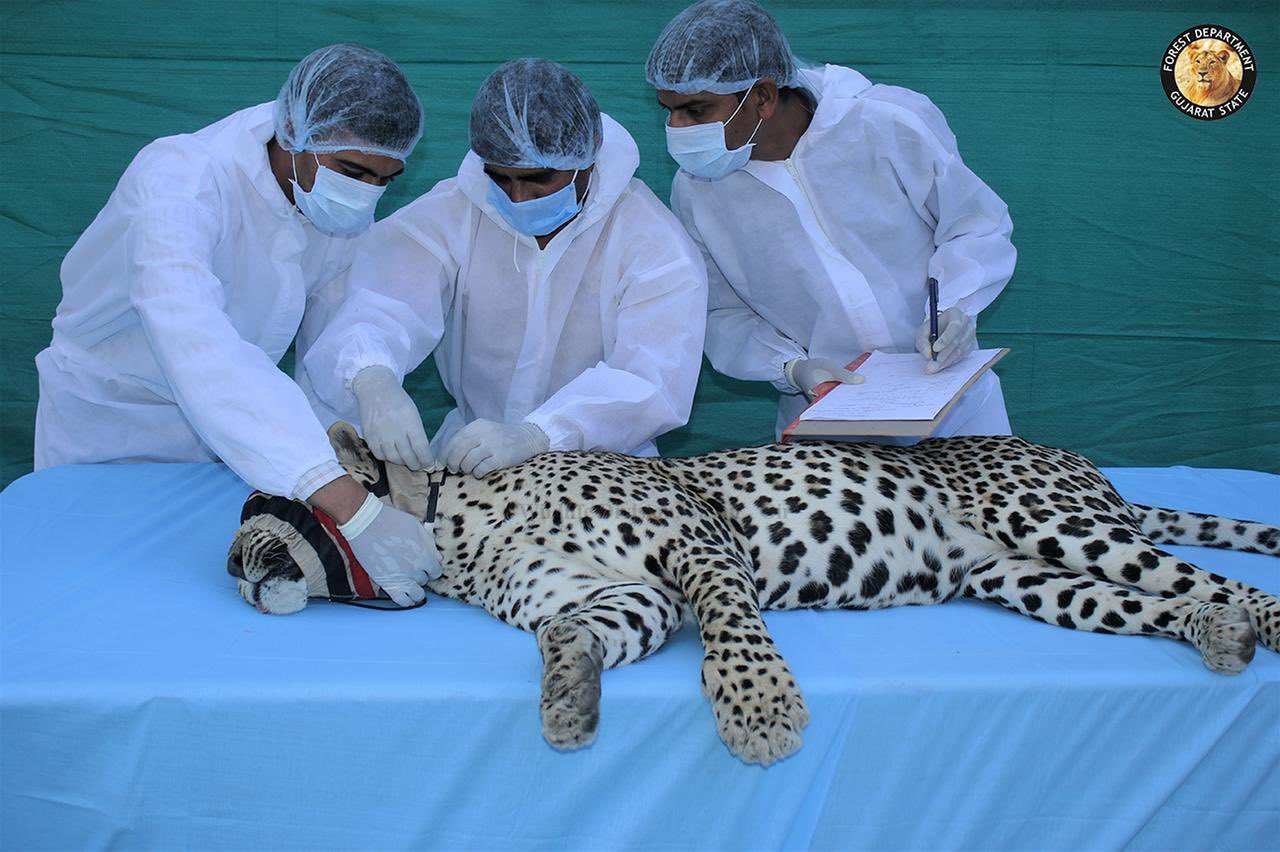Ahmedabad cycle renting start-up will start operations for Kochi Metro
- Tuesday | 23rd February, 2021
Guj municipal polls 2021: Ahmedabad sees lowest voters turnout, Jamnagar highest
- Monday | 22nd February, 2021

In the latest update, Gir Forest research department has started radio-collaring the leopard. The collars work by sending a signal to a satellite, which obtains the time and date of the signal sent from the collar and this information is transmitted back to the researchers who can go and investigate where the animal is and what it is doing.
In the latest update, Gir Forest research department has started radio-collaring the leopard.
The collars work by sending a signal to a satellite, which obtains the time and date of the signal sent from the collar and this information is transmitted back to the researchers who can go and investigate where the animal is and what it is doing.
The key features of this project are to obtain knowledge on how humans and leopards interact with each other and how they adapt to the presence of each other. This will also help obtain information on how leopards move across the major roads and understand their use of space and time in the Gir Forest landscape, and provide management recommendation with respect to the way they move in the landscape and conflict mitigation based on the results of the study.
The information was shared by Dr Rajiv Kumar Gupta, Additional Chief Secretary(Forest & Environment Deptt) & MD SSNL, Who wrote, “@GujForestDept ’s #wildlife division Sasan Gir has started Radio Collaring of #Leopards. So far 2 leopards have been collared & in total 5 will be collared. This work will help in understanding the movement pattern & behaviour of this elusive cat & reduce man-animal conflict”
.@GujForestDepts #wildlife division Sasan Gir has started Radio Collaring of #Leopards. So far 2 leopards have been collared & in total 5 will be collared. This work will help in understanding the movement pattern & behaviour of this elusive cat & reduce man animal conflict. pic.twitter.com/oZOYd1Pp0M
— Dr Rajiv Kumar Gupta (@drrajivguptaias) February 23, 2021
Before this, Radio Collaring was done at Mumbai’s Sanjay Gandhi National Park (SGNP) where a 6-year-old leopard was radio-collared and released into the wild

Now get the latest news from your city delivered to your inbox. Subscribe to the NYOOOZ daily newsletter to stay updated now.
